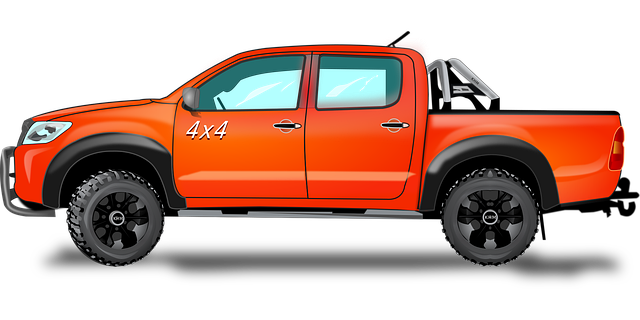Advanced truck diagnosis tools are vital for maintaining the Brownsville fleet's recovery lines, preventing leaks and mechanical issues. These cutting-edge solutions, integrated into on-site inspections, enhance efficiency, reduce downtime, and provide real-time tracking data. By optimizing performance and reliability, these tools support proactive maintenance and cost management, overcoming challenges related to complex diagnosis processes and staff training requirements.
Recovery lines are essential components in the efficient operation of trucking fleets. This article explores the fundamental concept of recovery lines and their critical role in truck diagnosis, particularly focusing on the Brownsville fleet. We delve into various tools used for effective management and highlight the advantages of integrating advanced diagnostic technologies. Additionally, it discusses common challenges and best practices to ensure optimal recovery line performance. Key topics include efficient tool selection, troubleshooting common issues, and maintaining a robust recovery line system.
- Understanding Recovery Lines: The Basic Concept
- Brownsville Fleet and Its Role in Truck Diagnosis
- Types of Tools Used for Efficient Recovery Line Management
- Benefits of Implementing Advanced Diagnostic Tools
- Challenges in Maintaining Recovery Lines: Common Issues
- Best Practices for Optimal Recovery Line Performance
Understanding Recovery Lines: The Basic Concept

Recovery lines are a fundamental concept in fleet management and vehicle diagnostics, particularly for heavy-duty vehicles like those in the Brownsville fleet. These lines represent a crucial system within trucks, serving as pathways for the efficient transfer of fluids essential for engine performance and longevity. By utilizing advanced truck diagnosis tools, fleet managers can gain valuable insights into the health of these recovery lines, ensuring optimal functionality and minimizing downtime.
Understanding the basic concept involves recognizing that recovery lines facilitate the movement of coolant, oil, or other liquids between different components of a vehicle’s engine or transmission. Regular inspection and maintenance of these lines are vital to prevent leaks, which can lead to serious mechanical issues. With the right tools, fleet managers can proactively address potential problems, ensuring the overall reliability and safety of their vehicles on the road.
Brownsville Fleet and Its Role in Truck Diagnosis

The Brownsville Fleet stands as a symbol of innovation in truck diagnosis tools. This unique collection of vehicles is equipped with cutting-edge technology designed to identify and troubleshoot various mechanical and electronic issues within trucks efficiently. Each vehicle in the fleet serves as a mobile diagnostic center, allowing technicians to perform thorough inspections on-site, reducing downtime for truck owners and operators significantly.
The fleet’s role extends beyond basic diagnosis; it also facilitates training for mechanics and technicians, showcasing the latest advancements in diagnostic software and hardware. By utilizing these advanced tools, the Brownsville Fleet plays a pivotal part in enhancing safety on the roads by ensuring that trucks are in optimal condition before they hit the highways, thereby contributing to overall transportation efficiency and reliability.
Types of Tools Used for Efficient Recovery Line Management

The efficient management of recovery lines relies heavily on the tools and technologies employed. In the case of the Brownsville fleet, specialized truck diagnosis tools play a pivotal role in optimizing this process. These advanced diagnostic systems enable mechanics to swiftly identify issues within vehicles, thereby reducing downtime. By leveraging such technology, the fleet can maintain a consistent and reliable service, ensuring quick recovery line management.
Additionally, digital solutions offer real-time tracking capabilities, providing valuable insights into vehicle performance and location. This data empowers fleet managers to make informed decisions, allocate resources effectively, and ultimately enhance overall operational efficiency. The integration of these modern tools has proven to be a game-changer in streamlining recovery line processes, especially in dynamic urban environments characterized by heavy traffic and a constant need for swift responses.
Benefits of Implementing Advanced Diagnostic Tools

Implementing advanced diagnostic tools like those designed for Brownsville fleet truck diagnosis can significantly enhance efficiency and productivity in vehicle maintenance. These tools offer several benefits, starting with their ability to accurately and swiftly identify issues within complex automotive systems. By leveraging cutting-edge technology, mechanics can pinpoint problems more efficiently, leading to quicker repairs and reduced downtime for vehicles.
Moreover, advanced diagnostic tools provide detailed data insights that help in preventive maintenance. This allows fleet managers to proactively address potential issues before they escalate, minimizing unexpected breakdowns and optimizing the overall performance of their fleets. With accurate and timely diagnostics, organizations can also better manage costs, as proactive measures typically prove more cost-effective than reactive ones.
Challenges in Maintaining Recovery Lines: Common Issues

Maintaining recovery lines, especially in a fleet like Brownsville’s, presents unique challenges. One common issue is the complexity of diagnosing truck issues swiftly and accurately. Without advanced tools, identifying problems can be labor-intensive and time-consuming, leading to delays in repairs and increased operational costs.
Another hurdle is keeping these lines well-maintained despite regular wear and tear. Regular inspections and prompt maintenance are crucial but require dedicated resources and expertise. The use of modern truck diagnosis tools can help streamline this process, yet ensuring their proper integration and training staff to utilize them effectively remains a challenge.
Best Practices for Optimal Recovery Line Performance

To achieve optimal recovery line performance, several best practices should be implemented. One crucial aspect is regular maintenance and inspection using advanced diagnostic tools like those offered by the Brownsville fleet. By staying proactive, mechanics can identify potential issues early on, preventing costly breakdowns.
Additionally, utilizing specialized software to monitor vehicle health and predictive analytics can significantly enhance efficiency. Ensuring proper training for staff and keeping up-to-date with industry standards and innovations further contributes to a well-performing recovery line. These strategies, combined with efficient inventory management and regular calibration of diagnosis tools, will ensure smooth operations and minimize downtime.
Understanding recovery lines and implementing advanced truck diagnosis tools like those used by the Brownsville fleet can significantly enhance vehicle performance and reduce maintenance costs. By adopting best practices for optimal recovery line management, you can overcome common challenges and ensure your fleet runs efficiently. Remember that efficient recovery line management is not just a practice but a strategy to stay ahead in today’s competitive landscape.



